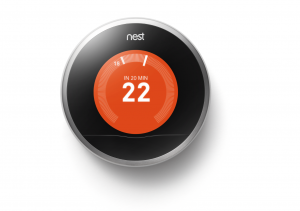Article

The security of network connectivity equipment is now in question thanks to the Krebs On Security DDoS attack
The EU’s latest idea to secure the Internet of Things? Sticky labels | Naked Security Blog
My Comments
The European Commission wants to push forward with a set of minimum standards for data security especially in context with “dedicated-function” devices including the “Internet Of Things” or “Internet Of Everything”. This also includes a simplified consumer-facing product-label system along with a customer-education program very similar to what has taken place in most countries concerning the energy efficiency of the appliances or the nutritional value of the foodstuffs we purchase.
This issue has been driven by a recent cyber attack on the Krebs On Security blog where the “Mirai” botnet was used to overload that security blog, the latest in a string of many attacks that were inflicted against data-security journalist Brian Krebs. But this botnet was hosted not on regular computers that were running malware downloaded from questionable Internet sites, nor was it hosted on Web hosts that were serving small-time Websites running a popular content management system. It was based on poorly-secured “dedicated-function” devices like network-infrastructure devices, video-surveillance devices, printers and “Internet Of Things” devices that had their firmware meddled with.
There will be issues that concern how we set network-enabled equipment up to operate securely along with the level of software maintenance that takes place for their firmware. A question always raised in this context is the setup or installation procedure that you perform when you first use these devices – whether this should be about a “default-for-security” procedure like requiring an administrator password of sufficient strength to be set before you can use the device.
But I also see another question concerning the “durables” class of equipment like refrigerators, televisions, building security and the like which is expected to be pushed on for a long time, typically past the time that a manufacturer would cease providing support for it. What needs to happen is an approach towards keeping the software maintained such as, perhaps, open-sourcing it or establishing a baseline software for that device.
Manufacturers could be researching ways to implement centralised simplified secure setup for consumer “Internet-Of-Things” devices along with maintaining the software that comes with these devices. This could be also about working on these issues with industry associations so that this kind of management can work industry-wide.
But the certification and distinct labelling requirement could be about enforcing secure-by-design approaches so that customers prefer hardware that has this quality. Similarly, a distinct label could be implemented to show that a device benefits from regular secure software maintenance so that it is protected against newer threats.
It usually just requires something to happen in a significant manner to be a wake-up call regarding computer and data security. But once a standard is worked out, it could answer the question of keeping “dedicated-purpose” computing devices secure.




